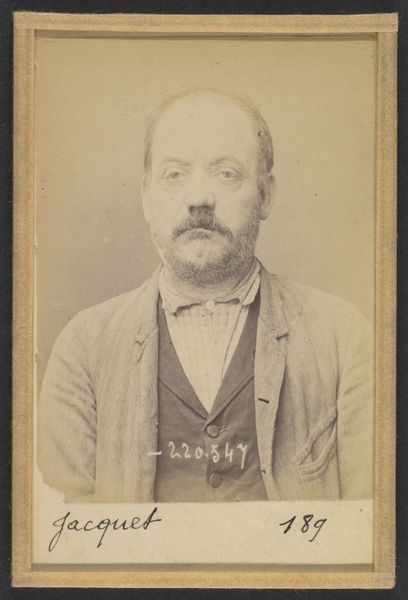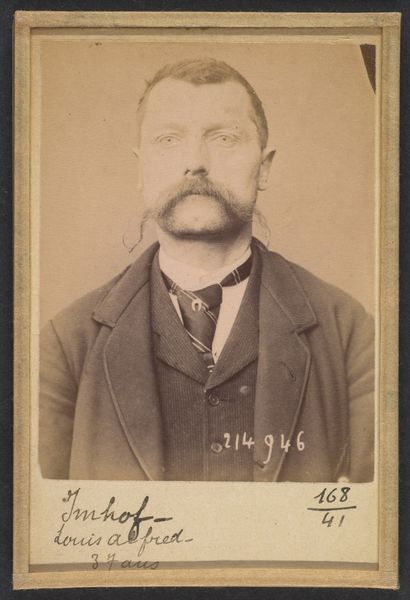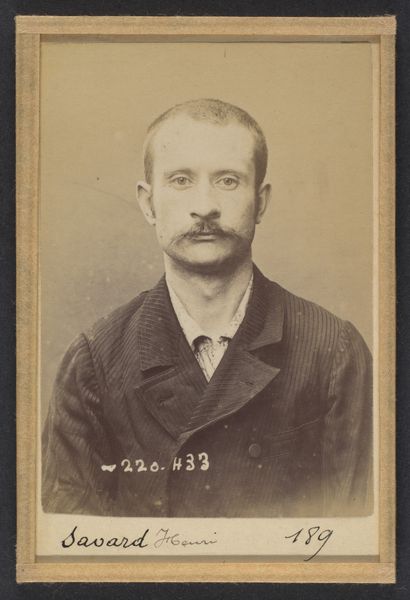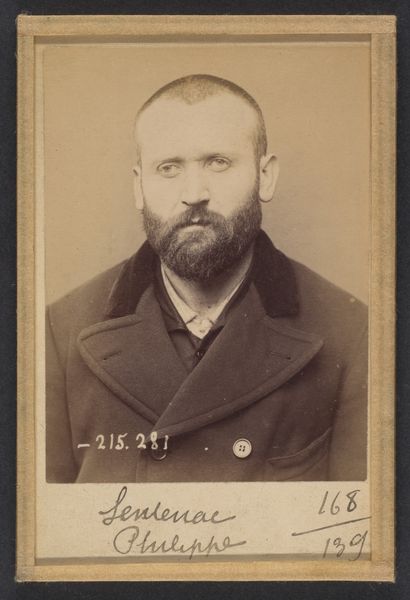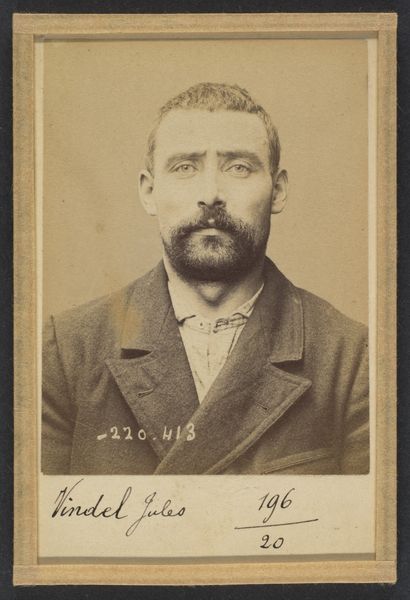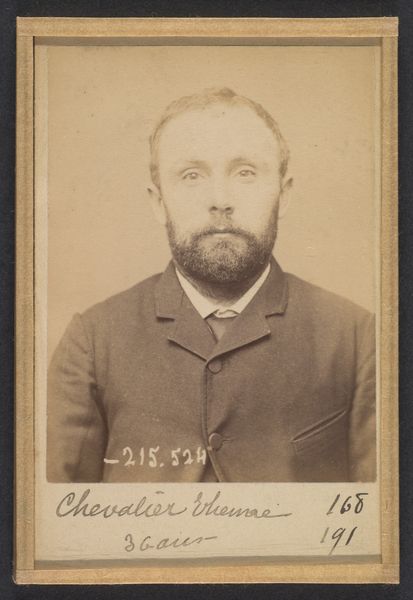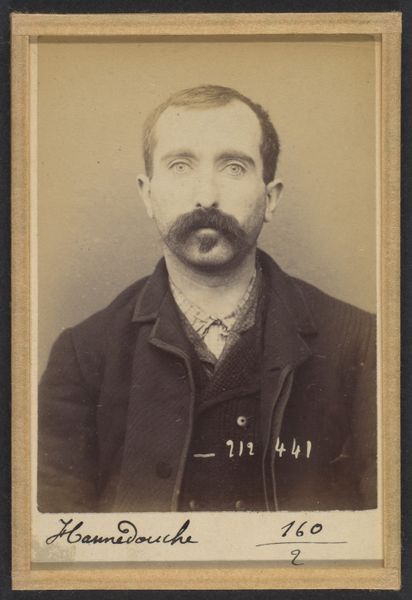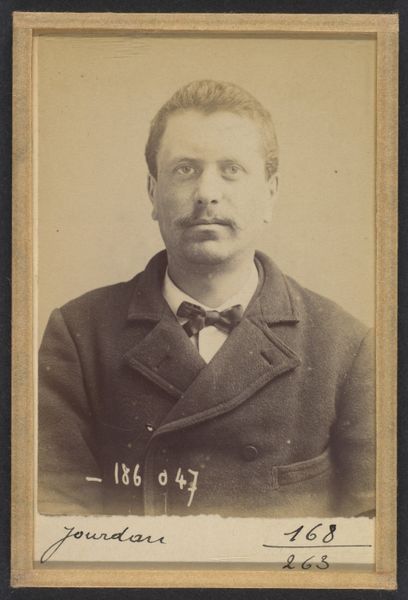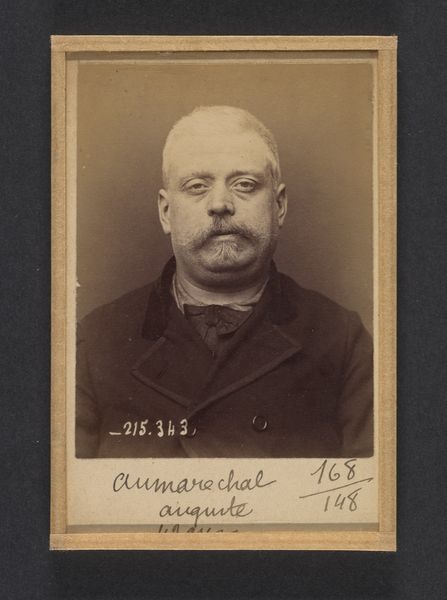
Recco. Grégoire. 35 ans, né à Formia (Italie). Tailleur d'habits. Anarchiste. 11/3/94. 1894
0:00
0:00
photography, gelatin-silver-print
#
portrait
#
african-art
#
portrait
#
photography
#
gelatin-silver-print
#
realism
Dimensions: 10.5 x 7 x 0.5 cm (4 1/8 x 2 3/4 x 3/16 in.) each
Copyright: Public Domain
Editor: Here we have Alphonse Bertillon’s gelatin silver print, “Recco. Grégroire. 35 ans, né à Formia (Italie). Tailleur d'habits. Anarchiste. 11/3/94,” made in 1894. What strikes me immediately is how this portrait of an individual feels like it's trying to tell a much larger story. How do you see this piece operating within a broader historical or social context? Curator: This photograph is a part of Bertillon's larger project of criminal identification, which revolutionized policing in late 19th-century France. The work offers a chilling glimpse into the relationship between power, knowledge, and the individual, operating within a system seeking to control and classify. The neutrality of the subject’s pose, and the detached tone of the annotations below, aren’t arbitrary. The subject, an Italian anarchist, is transformed into a data point within a larger system of surveillance and control. What does the explicit labeling of his profession and political leanings tell us about how "criminals" were classified at the time? Editor: That's fascinating, and it gives the image such a different weight. I initially just saw a portrait, but now I realize that it's about institutional power too. Does his classification, tailor, anarchist, predispose him to accusations or guilty verdicts within the context of French society at the time? Curator: Exactly. It highlights how "objective" systems of identification are never truly neutral, and can become tools of social control and discrimination. Looking at Bertillon's mugshots we must ask ourselves whose stories are never told, or are intentionally misrepresented. This isn't just a portrait; it's a document reflecting social and political anxieties of the time. Editor: I hadn't considered that. Thanks for illuminating the deeper context embedded in this photograph!
Comments
No comments
Be the first to comment and join the conversation on the ultimate creative platform.
